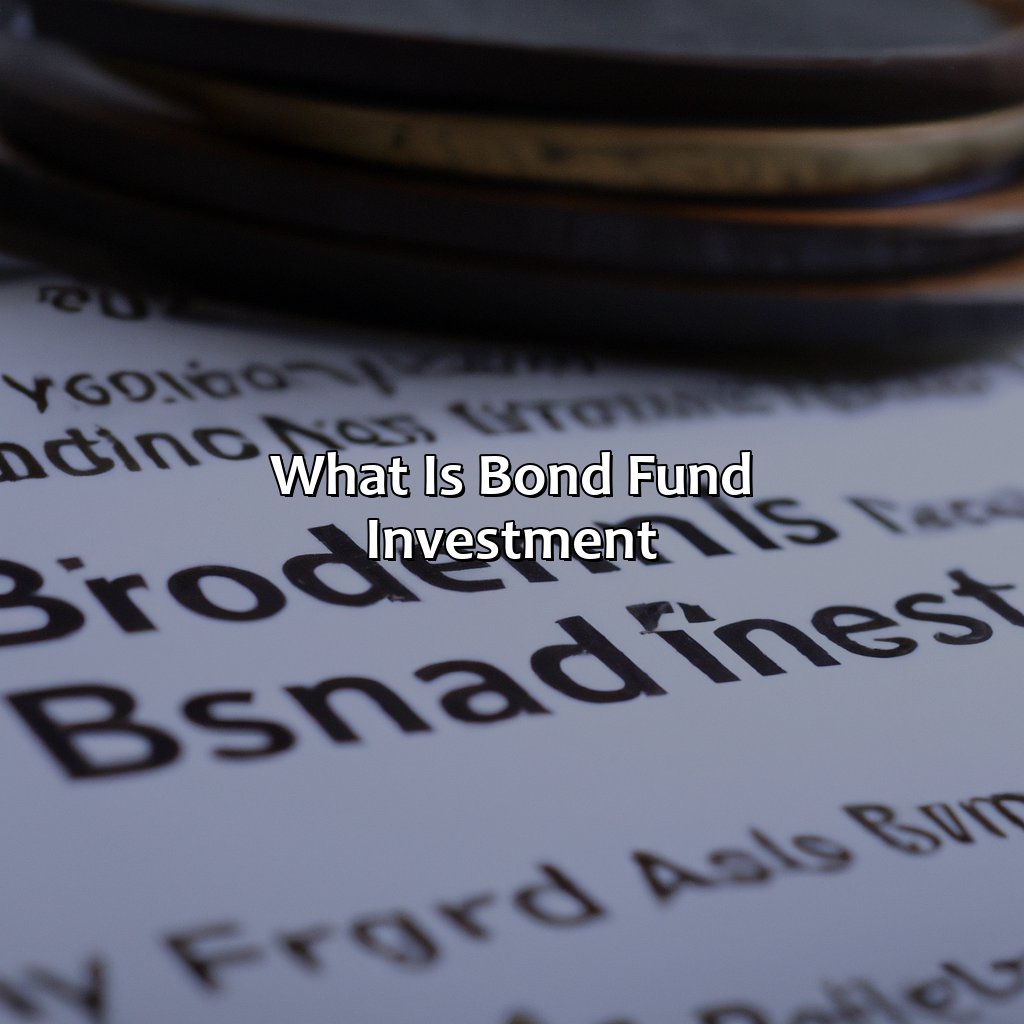What Is Bond Fund Investment?
Key Takeaway:
- Bond fund investment is a way to earn income by investing in an assortment of bonds that are packaged into a single fund, providing investors with the convenience of diversification and professional management.
- Investing in bond funds offers benefits such as regular fixed income, low minimum investment requirements, and relative safety compared to individual bond investments.
- There are different types of bond funds such as corporate bond funds, municipal bond funds, and government bond funds, each with its own set of risks and rewards. It is important to choose a bond fund that fits your investment goals and risk tolerance.
- It is important to consider risks such as interest rate risk, credit risk, and inflation risk when investing in bond funds. One should also consider diversifying their bond fund investment across multiple bond funds and monitor the performance regularly.
- To invest in bond funds, one should choose a suitable bond fund based on their investment goals, risk tolerance, and investment horizon. It is also important to diversify the investment by investing in multiple bond funds across different sectors and maturities.
Are you considering investing in a bond fund but don’t know where to start? Here we will discuss what a bond fund is, how it works, and why it may be a great addition to your financial portfolio. Get ready to learn more about bond fund investment so you can make the best decision for you.
Overview of Bond Fund Investment
Bond Fund Investment – An Effective Tool for Diversifying Your Portfolio
Bond fund investment is a popular investment vehicle that investors use to earn steady income and diversify their portfolio. By investing in a bond fund, investors pool their money with other investors, and the fund manager invests this collective pool of money in different types of bonds such as corporate bonds, government bonds, municipal bonds, and international bonds, among others. The bond fund’s overall performance is determined by the performance of the underlying bonds and the fund manager’s expertise in selecting and managing them.
Investing in bond funds offers several benefits, such as regular income generation, capital preservation, and risk diversification. In addition, bond funds are a less risky investment than stocks as bonds are considered less volatile than stocks, making them an excellent option for conservative investors. Furthermore, bond funds can be an effective tool for inflation protection, especially for investors who seek long-term investment options.
With bond fund investment, investors can access a wide range of bonds conveniently. Most bond funds are managed by a fund manager with expertise in bond investing, making it easier for investors to invest in the bond market without the need to worry about managing the bonds themselves. The fund manager’s primary responsibility is to select the most suitable bonds and manage the risks, thereby providing investors with a hassle-free investment option.
Bond funds are relatively suitable for investors with a medium to long-term investment horizon. Investors with a short-term investment horizon may not benefit from investing in bond funds as they may not earn significant returns in the short run. In contrast, investors with a long-term investment horizon can enjoy earning low-risk steady income and benefit from the long-term growth potential of the fund.
According to a recent report by Morningstar, the Vanguard Total Bond Market Index Fund has maintained its position as the largest bond fund in the US, with assets worth $258 billion as of March 2021.
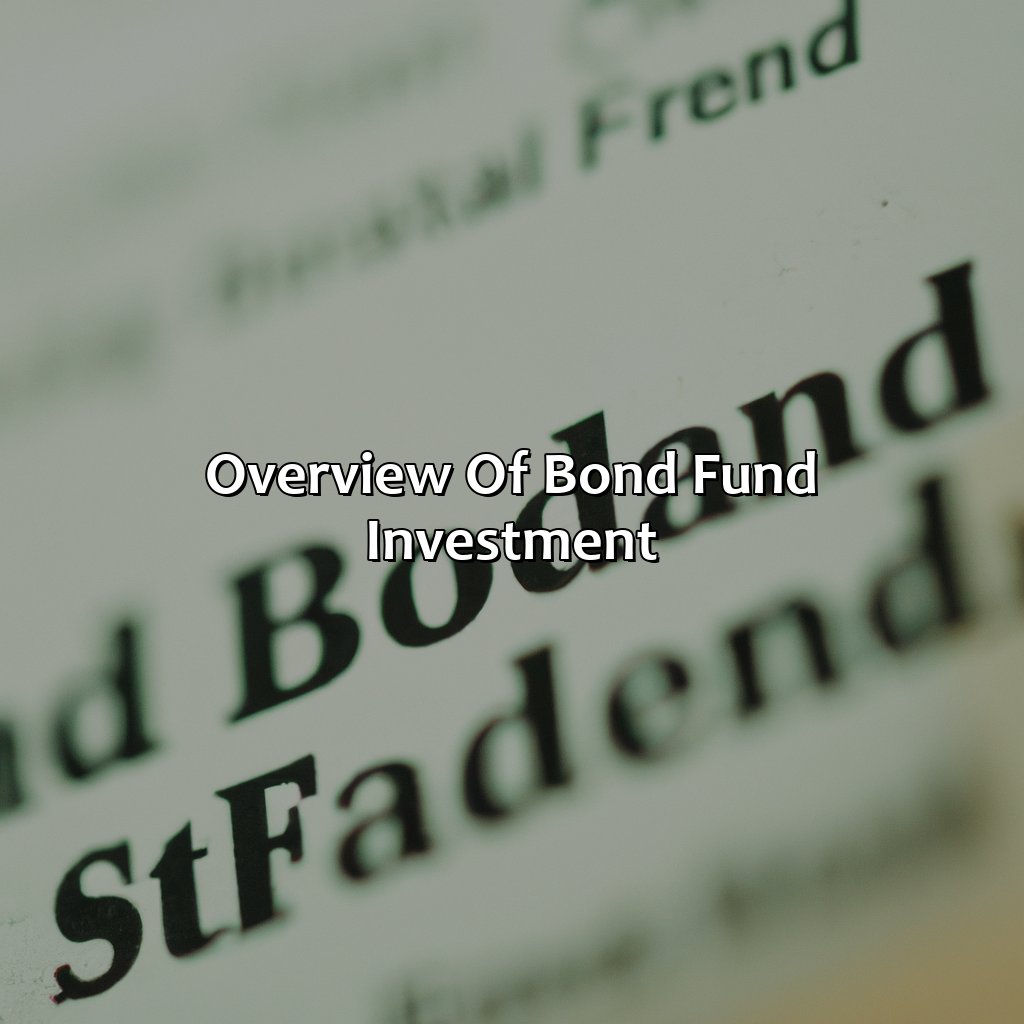
Image credits: retiregenz.com by Yuval Duncun
Benefits of Investing in Bond Funds
Bond funds provide several advantages for investors. By investing in bond funds, investors can receive regular income, diversify their portfolio, reduce risk, and optimize returns.
- Regular income: By investing in bond funds, investors can receive regular income in the form of coupon payments, which can be reinvested for additional returns.
- Diversification: Bond funds provide diversification benefits to investors since they invest in a variety of bonds, thereby spreading risk.
- Risk reduction: By investing in bond funds, investors can reduce risk by avoiding exposure to an individual bond’s credit risk or interest rate risk.
- Optimize returns: Bond funds can optimize returns by investing in bonds with higher yields, generating higher returns for investors.
Moreover, bond funds offer access to a range of bonds, including government, corporate, and municipal bonds, allowing investors to customize their portfolio to their specific investment goals. In addition, bond funds can offer better liquidity, as investors can easily buy or sell shares at any time, unlike investing in individual bonds, which may require holding until maturity.
Investors looking to invest in bond funds should consider their risk tolerance, investment goals, and time horizon. It is essential to understand the fund’s investment objectives, fees, and expenses before investing. Investors should also consider investing in bond index funds, as they offer low expenses, broad diversification, and transparent methodology for investing. Overall, bond funds provide an excellent investment opportunity for investors seeking regular income, diversification, and higher returns while reducing risk.
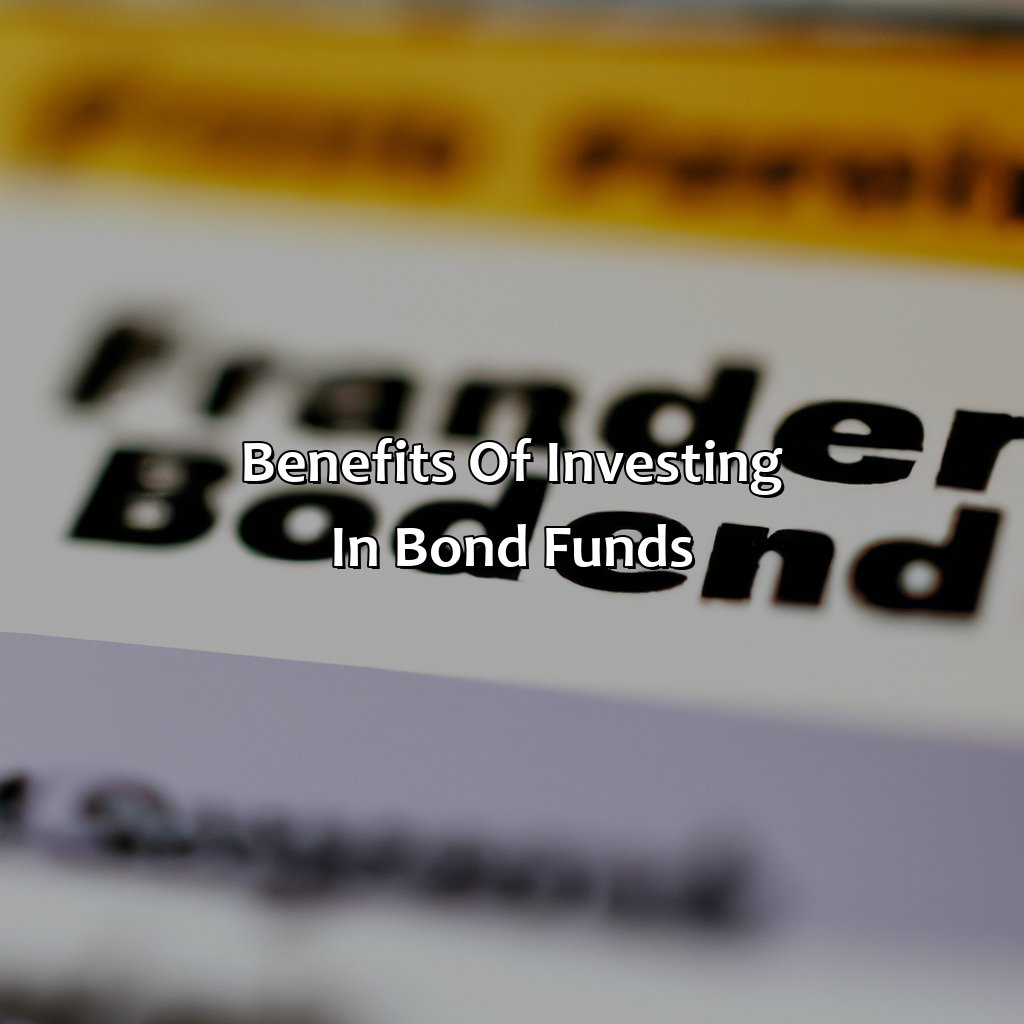
Image credits: retiregenz.com by Yuval Duncun
Types of Bond Funds
Bond Fund Investment: What You Need to Know
Bond funds are a type of investment fund that primarily invests in bonds. These funds offer investors an alternative to stocks, with the potential for regular income and lower risk. Here are three types of bond funds you should know about:
- Government Bond Funds – Invest in bonds issued by government entities. These funds carry low risk, making them popular with risk-averse investors.
- Corporate Bond Funds – Invest in bonds issued by corporations. These funds could carry higher risk than government bond funds, but offer the potential for higher returns.
- Municipal Bond Funds – Invest in bonds issued by local governments and agencies. These funds offer tax-free income to investors who reside in the state where the bonds were issued.
It’s worth noting that bond funds come in various durations, ranging from short-term to long-term. Additionally, some bond funds focus on specific regions or sectors. As always, it’s important to do your research and choose a fund that aligns with your investment goals and risk tolerance.
Historically speaking, bond funds first appeared in the 1970s, as investors began seeking alternatives to traditional stocks. Over the years, bond funds have become increasingly popular with investors, especially during times of market volatility. Today, with various types of bond funds to choose from, investors have more options than ever before.
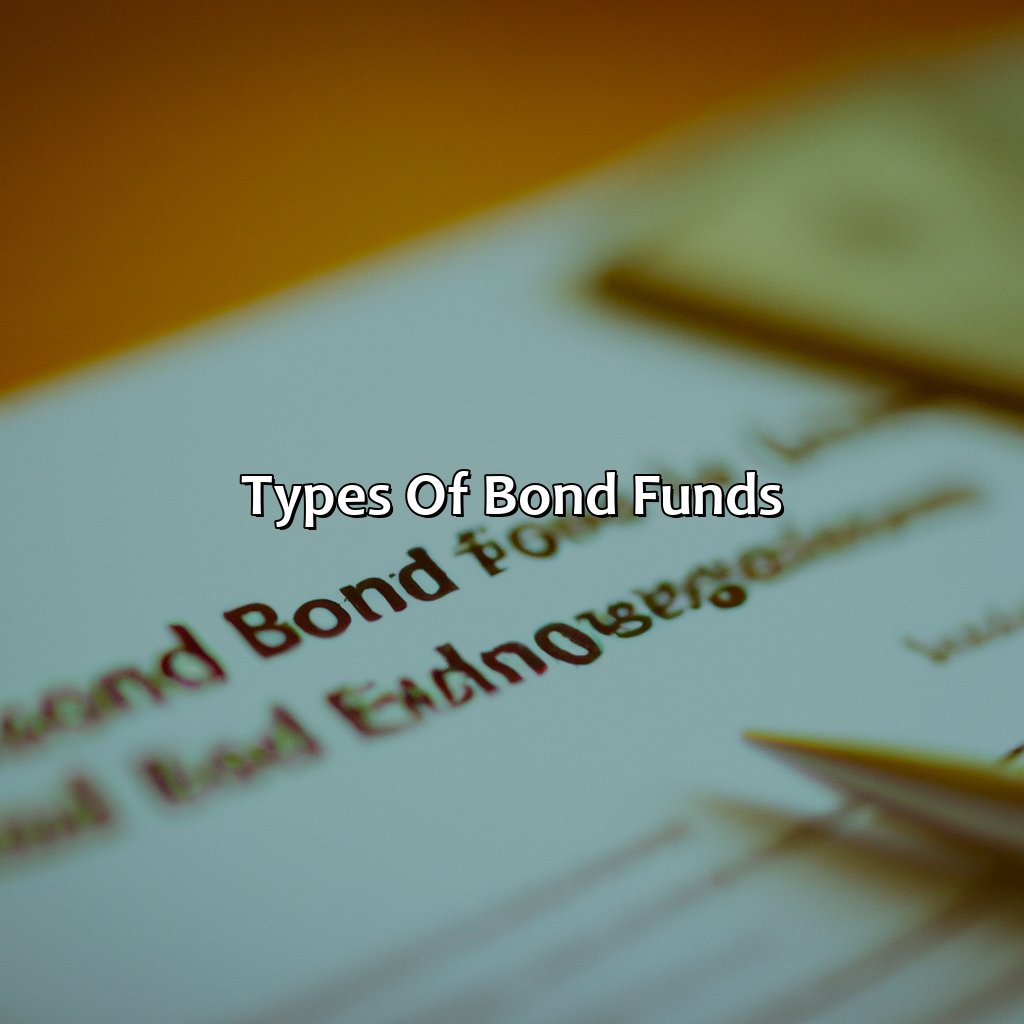
Image credits: retiregenz.com by David Jones
Risks to Consider When Investing in Bond Funds
Meticulously Assessing Perils of Bond Fund Investments
Investing in bond funds can be risky and requires careful consideration. Several aspects impact the safety and profitability of bond fund investments, such as fluctuations in interest rates, credit risk, and liquidity risk.
- Interest Rate Risk: Invariably, interest rates impact bond prices. When interest rates increase, bond prices decrease, hurting bond fund returns. The reverse also holds, suggesting that investing in longer-term bonds carries higher interest-rate risk.
- Credit Risk: High-yield bonds, also known as “junk bonds,” boast compelling potential yields. Nevertheless, they come with credit risk; high-yield bond issuers are more likely to default on their loans. Investing in bond funds exposes the investor to variations in an issuer’s ability to generate revenue and repay debt obligations.
- Liquidity Risk: Investors might find it challenging to liquidate bond fund holdings when they need to because trading volume in some bonds tends to be significantly lower than other securities.
It is also crucial to note that bond funds do not offer a guaranteed return rate or guarantee principal investment protection. Always consult with a financial advisor and carefully read the prospectus before investing in a bond fund.
There exist prolific anecdotes where investment fund management companies experienced vast losses, subjecting investors to detrimental financial repercussions. Thus, vigilance is paramount when assessing bond fund investments.

Image credits: retiregenz.com by James Duncun
How to Invest in Bond Funds
Investing in bond funds is a smart way to diversify your portfolio and earn steady income. Here are six simple steps to help you get started:
- Choose a bond fund that fits your needs and risk tolerance.
- Review the fund’s prospectus to understand its objectives, fees, and past performance.
- Decide on the amount you want to invest and make the purchase through a brokerage or fund company.
- Monitor your investment and re-evaluate periodically to ensure it aligns with your goals.
- Consider tax implications and seek professional advice when necessary.
- Stay informed about market trends and economic indicators that can impact bond fund performance.
It is worth noting that investing in bond funds involves risks, including loss of principal and fluctuation in value. It is important to conduct due diligence before making any investment decisions.
Did you know that bond funds were first introduced in the US in 1929 by what is now known as the Vanguard Group? They have since become popular among investors seeking steady income and portfolio diversification. (Source: Vanguard)
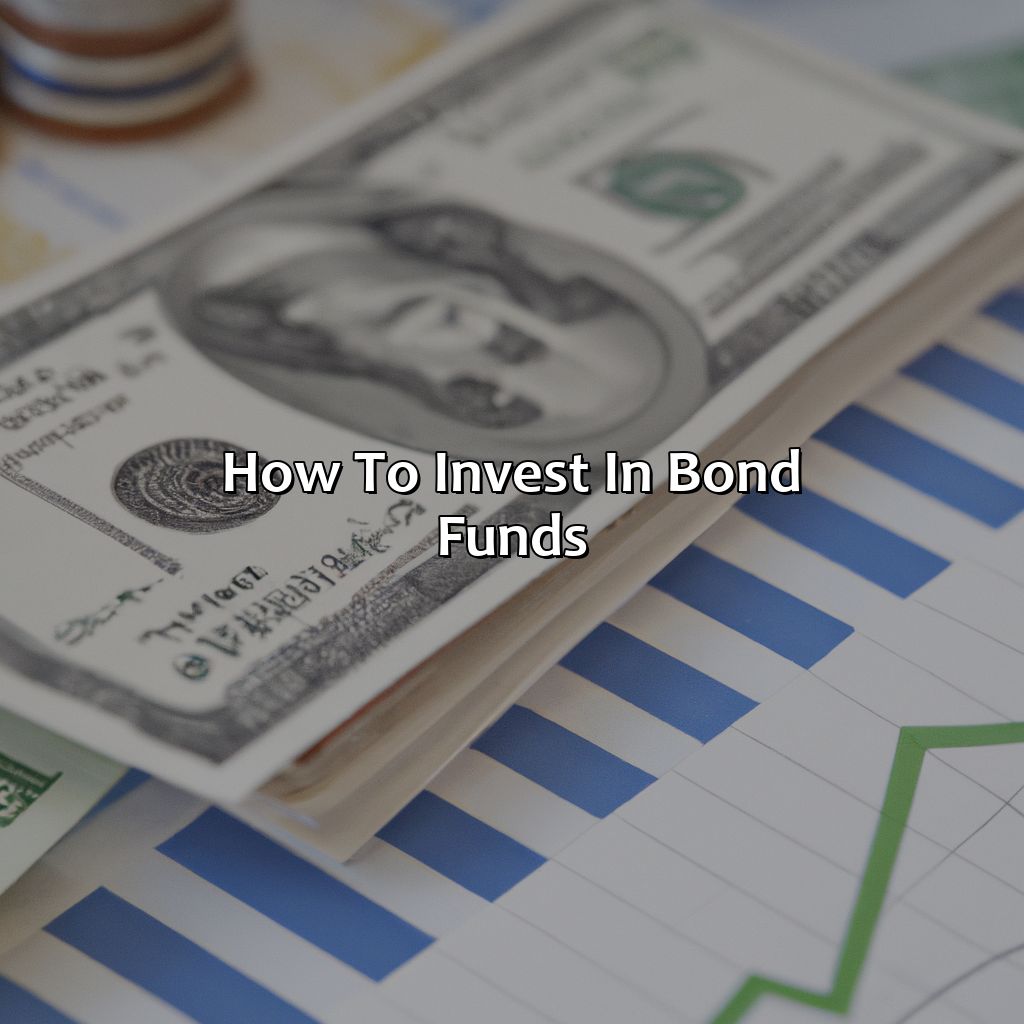
Image credits: retiregenz.com by Adam Washington
5 Facts About Bond Fund Investment:
Bond funds are investment vehicles that pool money from multiple investors to invest in a diversified portfolio of bonds. (Source: Investopedia)
Bond funds come in different varieties, including government, corporate, and municipal bond funds. (Source: The Motley Fool)
The value of bond funds may fluctuate depending on changes in interest rates and credit ratings of the underlying bonds. (Source: Charles Schwab)
Bond funds provide regular income to investors in the form of interest payments. (Source: Fidelity)
One advantage of bond funds is their relatively low risk compared to other types of investments like stocks. (Source: Forbes)
FAQs about What Is Bond Fund Investment?
What is bond fund investment?
Bond fund investment refers to investing in a type of mutual fund that invests in fixed income securities like bonds. These funds are managed by professional fund managers who pool money from multiple investors and buy and sell bonds on behalf of the fund.
What are the benefits of bond fund investment?
Bond fund investment offers a number of benefits, including diversification, income generation, and professional management. Since bond funds invest in a basket of bonds, it can help reduce the risk associated with investing in individual bonds. Additionally, bond funds are designed to generate regular income through coupon payments, making them a great option for investors looking for steady income. Finally, fund managers have access to extensive research and analysis, allowing them to make informed investment decisions.
What are the risks associated with bond fund investment?
While bond fund investment is generally considered less risky than investing in individual bonds, there are still risks to consider. Interest rate risk is one of the biggest risks associated with bond funds, as rising interest rates can lead to a decline in bond prices and a decrease in fund returns. Additionally, credit risk, inflation risk, and liquidity risk are all potential risks for bond fund investors.
How do you select a bond fund to invest in?
When selecting a bond fund to invest in, it’s important to consider a number of factors, including the fund’s investment objective, risk level, and performance history. Additionally, you’ll want to consider the fund’s expense ratio, as fees can have a significant impact on your overall returns. Finally, take the time to research the fund’s management team, as their expertise and experience can play a critical role in the fund’s success.
What types of bond funds are available to invest in?
There are a variety of bond funds available to suit different investment goals and risk tolerances. Some of the most common types include government bond funds, corporate bond funds, high yield bond funds, and municipal bond funds. Additionally, you can choose between short-term, intermediate-term, and long-term bond funds based on your investment horizon.
What is the difference between bond funds and individual bonds?
Bond funds and individual bonds differ in a number of ways. While bond funds offer diversification and professional management, individual bonds offer more control over the timing and amounts of interest payments. Additionally, bond funds can be traded more easily than individual bonds, and they generally require a lower investment minimum. However, individual bonds may offer higher yields and greater transparency than bond funds.
 Checkout this IRS Loophole
Checkout this IRS Loophole 
